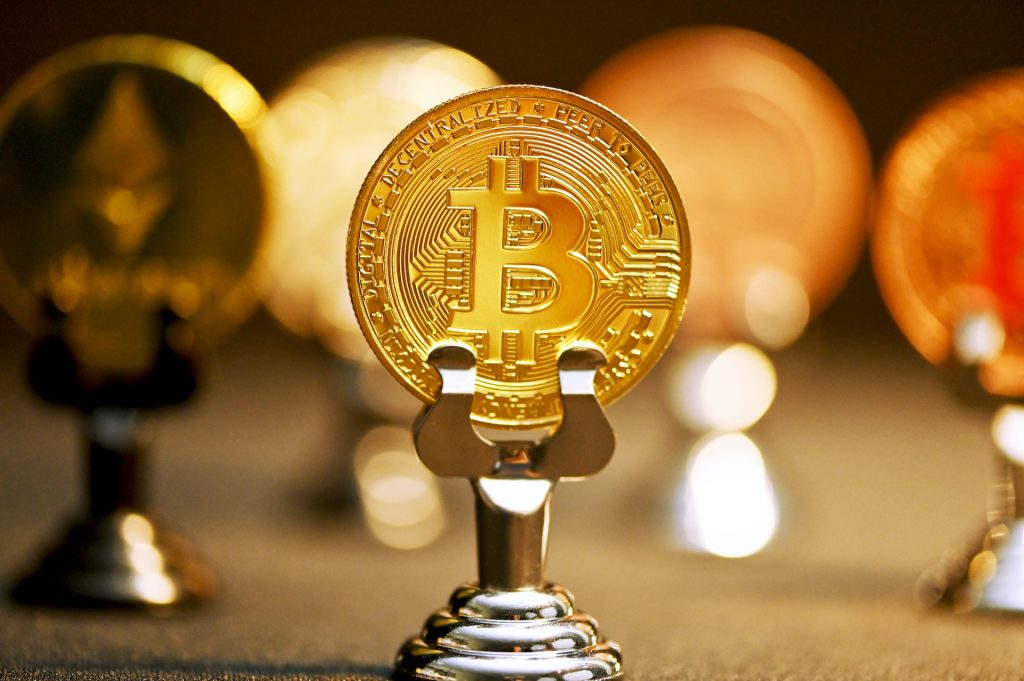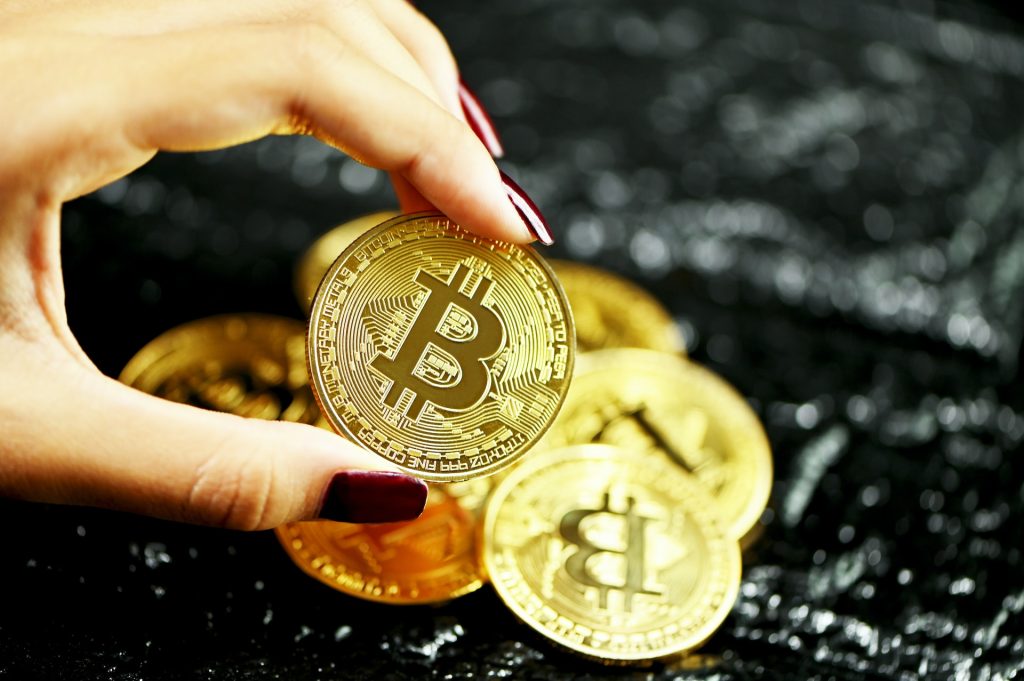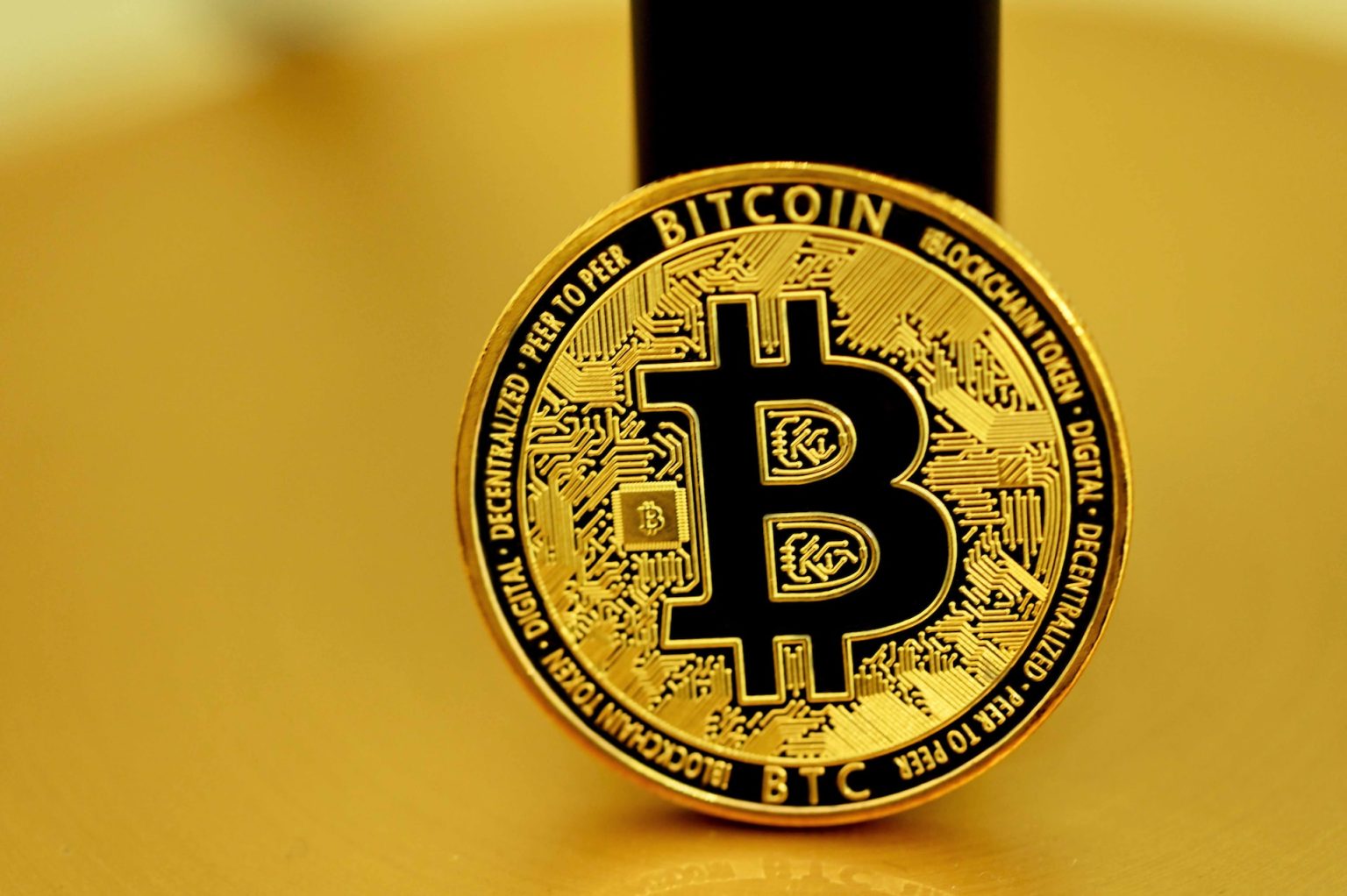In the late 2000s, the financial world braced itself for an unprecedented disruption, not from a new banking giant or a monumental economic policy, but from a digital phenomenon named Bitcoin. Launched in 2009 by a pseudonymous entity, Satoshi Nakamoto, Bitcoin emerged as an answer to the shortcomings of traditional financial systems, particularly centralized control and the vulnerabilities associated with it.
What is Bitcoin?

Bitcoin is a decentralized cryptocurrency launched in 2009 by an anonymous entity known as Satoshi Nakamoto. Unlike traditional currencies, it operates on a technology called the blockchain, a public ledger containing all transaction data.
Bitcoin often symbolized as BTC is not just a digital currency; it’s a revolutionary shift in how we perceive and utilize money. Unlike the physical currencies we’re accustomed to – the dollars, euros, or pounds – Bitcoin doesn’t have a tangible form, nor is it backed by gold or government decree. Instead, its value emanates from a decentralized consensus and trust in mathematics and encryption.
More than just a medium of exchange, Bitcoin introduced the world to the concept of “cryptocurrency,” a fusion of cryptographic techniques and a decentralized ledger system called the blockchain. This combination ensures security, transparency, and autonomy in financial transactions, challenging the very ethos of traditional banking and monetary systems.
Why is Bitcoin Significant?
The digital age has ushered in countless innovations, but few have stirred the waters of the financial world as profoundly as Bitcoin. This cryptocurrency, the first of its kind, has introduced a paradigm shift in the way we perceive and handle money. But what exactly makes Bitcoin so groundbreaking?
Steps to Follow for Buying a Bitcoin

1. Decentralization
Decentralization refers to the distribution of authority and functions away from a central location or authority. In the context of Bitcoin, it means that no single entity, government, or organization has control over the currency.
- Democratization of Money: Traditional banking systems and financial institutions often come with bureaucratic processes, influenced by political or corporate interests. Bitcoin offers a monetary system where the power is evenly distributed among its users.
- Censorship Resistant: Without a central governing body, transactions cannot be frozen, and accounts cannot be closed by institutions. This is especially valuable in countries with strict financial censorship.
- Security and Immutability: The decentralized nature of Bitcoin, powered by blockchain technology, ensures that transactions are permanent and cannot be altered. This creates a trustless environment, where parties don’t need to trust each other but can rely on the system itself.
2. Limited Supply
Bitcoin’s code is written so that there will only ever be 21 million Bitcoins produced. This limit was set to introduce scarcity to the digital asset, similar to precious metals like gold.
- Inflationary Hedge: Traditional currencies are susceptible to inflation, often caused by governments printing more money. With Bitcoin’s capped supply, it’s resistant to the devaluation that comes with inflation, making it an appealing store of value for many.
- Predictable Monetary Policy: The Bitcoin protocol has a predictable issuance rate, with the number of Bitcoins produced roughly every 10 minutes (through mining) halving approximately every four years. This predictable model allows for long-term planning without the fear of sudden changes in monetary policy.
- Supply and Demand Economics: With a finite supply and increasing demand, many believe that over time, this will put upward pressure on Bitcoin’s price, making it a potentially appreciating asset.
3. Global Acceptance
Global acceptance refers to the worldwide recognition and use of Bitcoin, both as a store of value and a medium of exchange.
- Borderless Transactions: Bitcoin can be sent and received anywhere in the world, without the need for currency conversions or traditional banking systems. This facilitates international trade and remittances.
- Financial Inclusion: There are billions of people globally without access to traditional banking systems. Bitcoin provides a means for these individuals to store and transfer value, democratizing financial access.
- Mainstream Adoption: From multinational corporations adding Bitcoin to their balance sheets to payment providers integrating Bitcoin transactions, the cryptocurrency is steadily moving from the fringes of the internet to the mainstream financial world.
4. Setting up Bitcoin Wallet
Setting up a digital wallet is a foundational step for anyone venturing into the world of cryptocurrencies. A digital wallet, often referred to as a “crypto wallet,” functions as a virtual location where users store, send, and receive digital currencies like Bitcoin. It’s akin to an online banking account but for cryptocurrencies. These wallets can be web-based, mobile apps, desktop applications, or even physical devices known as hardware wallets. The choice of a wallet often hinges on the balance between convenience and security, with hardware wallets being the gold standard for security-conscious users. As the bridge between users and their digital assets, ensuring a secure and user-friendly wallet setup is paramount.
5. Choosing a Bitcoin Exchange
Picking a Bitcoin exchange is a pivotal decision for cryptocurrency enthusiasts and investors. A Bitcoin exchange serves as a digital marketplace where traders can buy or sell Bitcoins using different fiat currencies or alternative cryptocurrencies. The selection of an appropriate exchange is influenced by various factors:
- Geographical Restrictions: Some exchanges may not operate in certain countries. For instance, Binance might be accessible in one region but restricted in another.
- Liquidity: Exchanges with higher trading volumes tend to offer more liquidity, which can lead to faster trade execution. Bitfinex and Binance often boast high liquidity.
- Security: Given the history of some exchanges falling victim to hacks, security is paramount. Coinbase, for example, prides itself on its advanced security measures.
- Fees: Each exchange has a distinct fee structure. Kraken, for instance, might offer lower transaction fees than its competitors for specific trading volumes or methods.
- User Experience: A user-friendly interface can greatly enhance the trading experience. Newcomers might find platforms like eToro or Gemini more intuitive.
- Supported Tokens: While some platforms like Bittrex or Poloniex might offer a vast array of altcoins, others might focus solely on primary coins.
6. Registration and Verification
Registration and verification are integral processes when joining a Bitcoin exchange or any other platform dealing with financial transactions. Registration usually involves providing basic personal information such as a user’s name, and email address, and creating a password. This creates a unique account on the platform. Once registered, the user moves to the verification stage. This step is essential for ensuring the safety and integrity of the platform and its users. Exchanges request users to submit identification documents, which can include a driver’s license, passport, or utility bills. The verification process is a way exchanges comply with global anti-money laundering (AML) and know-your-customer (KYC) regulations. It not only fortifies the user’s account security but also aids in preventing fraud, money laundering, and other illicit activities. As the crypto sphere matures, these procedures reinforce trust and safety within the ecosystem.
7. Deposit Funds
Depositing funds is a foundational step towards buying Bitcoin, bridging the traditional financial systems with the burgeoning realm of cryptocurrency. Before diving into Bitcoin purchases, users must first load their exchange account with either fiat money or another cryptocurrency. Bank Transfers, often using wire or ACH transfers, are prevalent due to their ability to handle large sums, though they might require a few days for clearance. Credit/Debit Cards provide an avenue for instant deposits, albeit often paired with slightly higher transaction fees. PayPal, Neteller, and Skrill are among the online payment systems some exchanges accept for deposits.
Cryptocurrency Transfers allow users to deposit altcoins like Ethereum or Litecoin, which can then be traded for Bitcoin. More recently, Mobile Payment Platforms like Apple Pay or Google Pay have been integrated by certain exchanges. Cash Deposits at partnered retail locations or ATMs are also emerging as a method, particularly for those seeking anonymity. Lastly, Gift Cards and Vouchers can sometimes be redeemed for cryptocurrency on specific platforms. When choosing a deposit method, users should consider factors like fees, processing times, and regional availability. Once funds are successfully deposited, they’ll be available on the exchange for Bitcoin acquisition.
8. Placing an Order to Bitcoin
the process of placing an order to buy Bitcoin, it’s essential to recognize the blend of technology, strategy, and market dynamics involved.
- Market Order: A market order is essentially “buying at market price.” It is the quickest way to purchase Bitcoin, ideal for those who prioritize speed over exact pricing. The potential drawback is what’s known as “slippage” in trading terms – the difference between the expected price and the execution price, especially in highly volatile markets.
- Limit Order: With limit orders, users have more control, dictating the terms of their purchase. By setting a specific price, buyers can aim to get their desired rate. However, patience is key, as there’s no guarantee the market will hit the stipulated price, and the order could remain unfilled.
- Stop Order: It’s a more advanced tool, primarily used as a safety mechanism. For example, in a market showing a consistent rise in Bitcoin’s price, a trader can set a stop order to buy if a predefined upward price is reached, potentially indicating a continued bullish trend.
- Recurring Buy: This is a methodical approach and is favored by those looking to invest consistently. By setting up automated regular purchases, traders can benefit from “dollar-cost averaging,” potentially mitigating the impact of market volatility over time.
Additionally, there’s the aspect of order book depth, which shows the balance of buy and sell orders in the market. It can be a useful tool for gauging market sentiment before placing an order. It’s also noteworthy to mention fees. Every exchange has a fee structure, which might vary based on the order type, so it’s prudent to be aware of these to avoid any unexpected costs.
Once you’ve grasped these order types and associated dynamics, buying Bitcoin becomes a more informed and strategic endeavor. The acquired Bitcoin, post-purchase, is stored in the exchange’s digital wallet or can be transferred to a personal wallet for added security.
7. Safely Storing Your Bitcoin
Upon acquiring Bitcoin, one of the paramount concerns is its safe storage. Bitcoin, being a digital asset, is stored in digital wallets. However, not all wallets are created equal, and understanding their nuances is crucial for ensuring security.
- Hot Wallets: These are wallets connected to the internet. They are convenient for regular trading and transactions due to their accessibility. Platforms like Coinbase or Binance provide users with hot wallets. However, being online makes them vulnerable to hacking attempts.
- Cold Wallets: These are offline storage systems and are considered the safest option for holding Bitcoin, especially for long durations. Examples include hardware wallets like Ledger Nano S or Trezor. Since they’re offline, they’re impervious to online hacking attempts.
- Paper Wallets: An old-school method, paper wallets are physical documents containing the public and private keys to access your Bitcoin. They are immune to online attacks, but their physical nature means they can be lost or damaged.
- Wallet Backups: Regardless of your wallet type, it’s vital to have backups. For digital wallets, ensure encrypted backups at multiple locations. For paper wallets, keep multiple copies in secure locations.
- Multi-Signature: This is an added security feature wherein more than one key is required to authorize a Bitcoin transaction. It’s like a joint bank account, where multiple signatures are needed.
- Updates & Security Practices: Always keep your software updated, as updates often fix vulnerabilities. Utilize strong, unique passwords and consider using two-factor authentication (2FA) for added security.
8. Continuous Learning and Safe Practices
Navigating the dynamic world of cryptocurrencies, particularly Bitcoin demands perpetual learning and vigilant safe practices. The ecosystem evolves with lightning speed, driven by technological advancements, regulatory shifts, and market sentiment.
- Stay Updated: The cryptocurrency realm is a hotbed for innovations and regulatory changes. Subscribing to reputable crypto news outlets, joining forums, and following key influencers can be instrumental in staying abreast of essential developments. Regular updates equip investors with insights to make informed decisions and anticipate market trends.
- Avoid Phishing: One of the most pervasive threats in the digital age is phishing attacks. Scammers often masquerade as trustworthy entities, sending deceptive emails or creating fake websites to steal sensitive data. Always double-check URLs, especially before entering credentials or making transactions. Avoid clicking on suspicious links, and consider installing browser extensions that identify malicious websites.
- HODL: Originating from a misspelled forum post, “HODL” has become emblematic of a particular investing philosophy in the crypto community. It’s a call to resist the urge to sell Bitcoin during market dips, emphasizing a long-term, patient approach. While it’s essential to make decisions based on thorough research and personal financial circumstances, the ethos behind HODL encourages investors not to be swayed by short-term market volatility.
- Diversify: While not explicitly mentioned in your points, it’s a good practice in any investment landscape. Don’t put all your funds into Bitcoin; consider diversifying across different cryptocurrencies or even other asset classes to spread risk.
- Secure Communication: Be cautious about sharing personal details, especially related to your investments. Use encrypted messaging apps and be wary of unsolicited advice or offers.
- Community Involvement: Joining crypto communities, whether on Reddit, Discord, or other platforms, can be invaluable. They serve as platforms for sharing news, discussing strategies, and seeking advice from more seasoned participants.
Conclusion
The journey with Bitcoin or any cryptocurrency is not just about buying and holding; it’s about being a proactive participant, consistently updating one’s knowledge, and exercising prudence to safeguard investments. Purchasing Bitcoin requires a blend of technology know-how and financial literacy. As the world leans more towards digitalization, understanding and participating in the crypto ecosystem becomes even more relevant. Always prioritize security and make informed decisions.

